A blue river snakes its way through steep hillsides with vines carved into mountains. Sleepy and charming villages are dotted with whitewashed wineries, where time moves slowly and winemakers work tirelessly for centuries to produce the grapes for Port.
This is the Douro Valley in Portugal also called the “enchanted valley.” While not as well known as Bordeaux, Tuscany or Napa Valley, the Douro Valley is one of the world’s oldest demarcated wine regions. Located approximately 60 miles inland of the coastal city of Porto, the Douro is divided into three subregions: Baixo Corgo, Cima Corgo, and Douro Superior.
The history of the valley as a viticultural area dates back in time. Wine has been produced in the Douro for around 2,000 years.
The historical foundation of viticulture began with the Romans but it was in the 12th century that Cistercian monks consolidated the vineyards to produce mass wine for the liturgical act and also to provide funds for their monasteries.
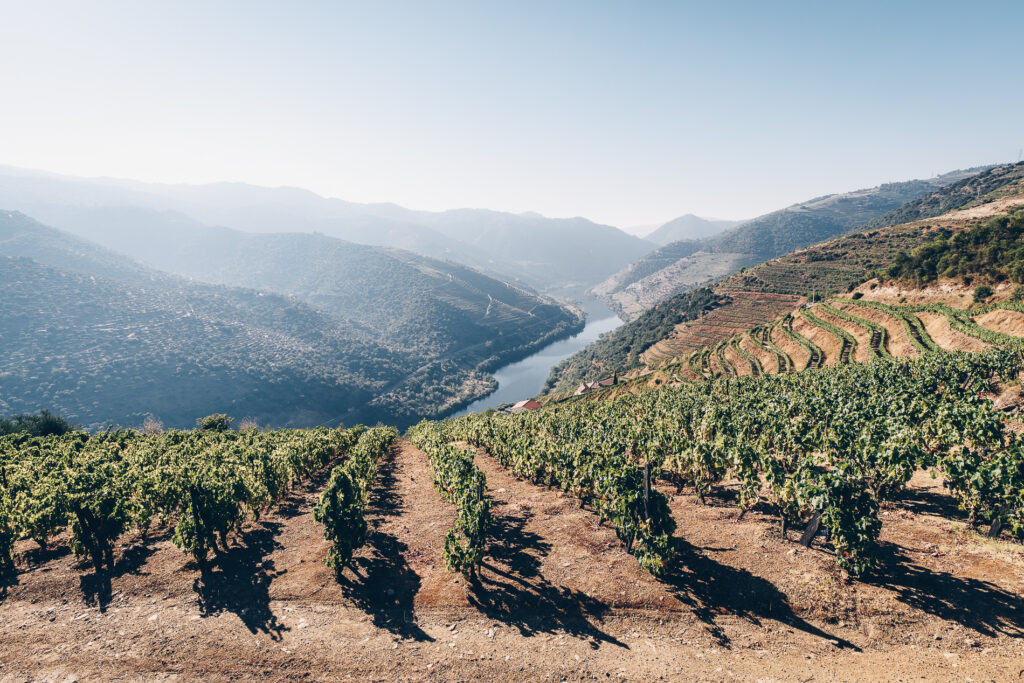
Over the centuries, many terraces have been built in the Douro Valley using different techniques and this long tradition has created a truly ancient and remarkable heritage: A cultural landscape of exceptional beauty, emblems of the human labor it takes to grow anything here.
A trip into this glorious land—a UNESCO World Heritage Site since 2001—is very much an emotional experience. Besides the enchanting landscape, visitors are spoilt for choice with the quantity and quality of quintas, aka wineries, to visit. Thankfully, we’re here to break it down to you so that you know which wineries to visit in the Douro Valley!
Getting there
If you’re thinking about visiting the best wineries in the Douro Valley, you can enjoy a scenic train journey leaving from São Bento, the train station in the center of historic Porto. Admire the spectacular landscapes (particularly between Foz Tua and Pocinho), and follow the Douro River to the valley.
Quinta de la Rosa
A short distance from Pinhão—a pint-sized town that is walkable in less than an hour—sits Quinta de la Rosa, a winery famed for its stellar varietals and Port (a fortified wine).
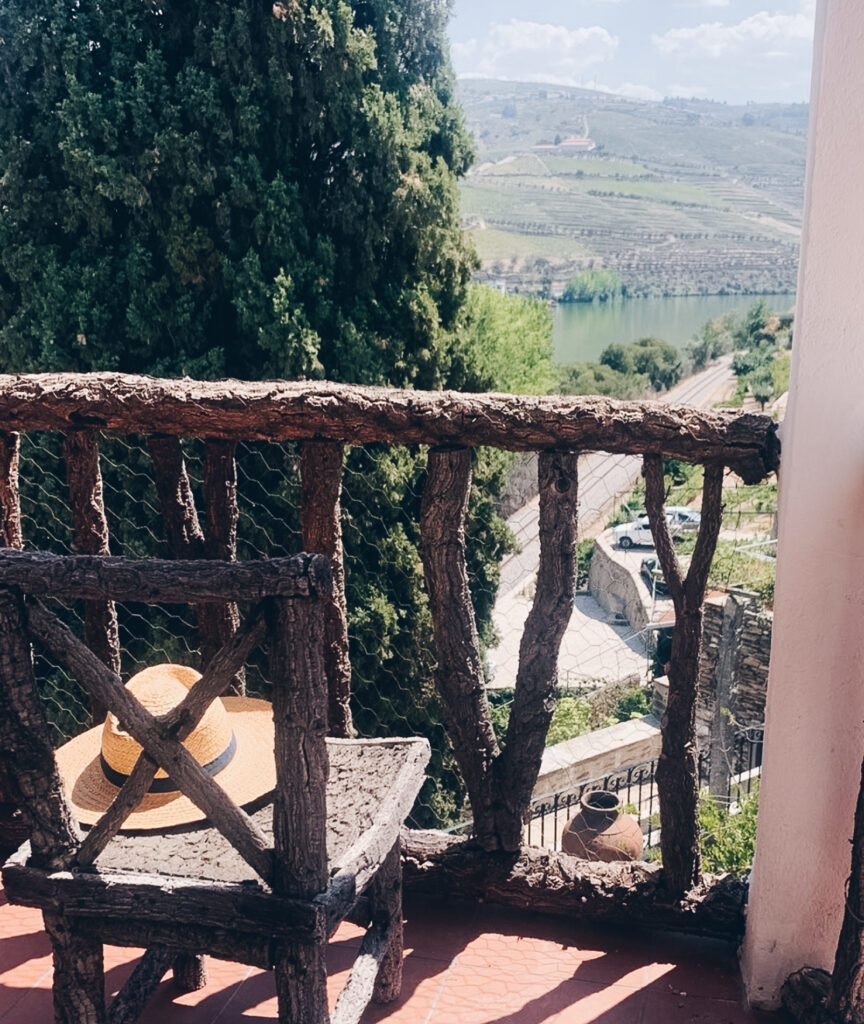
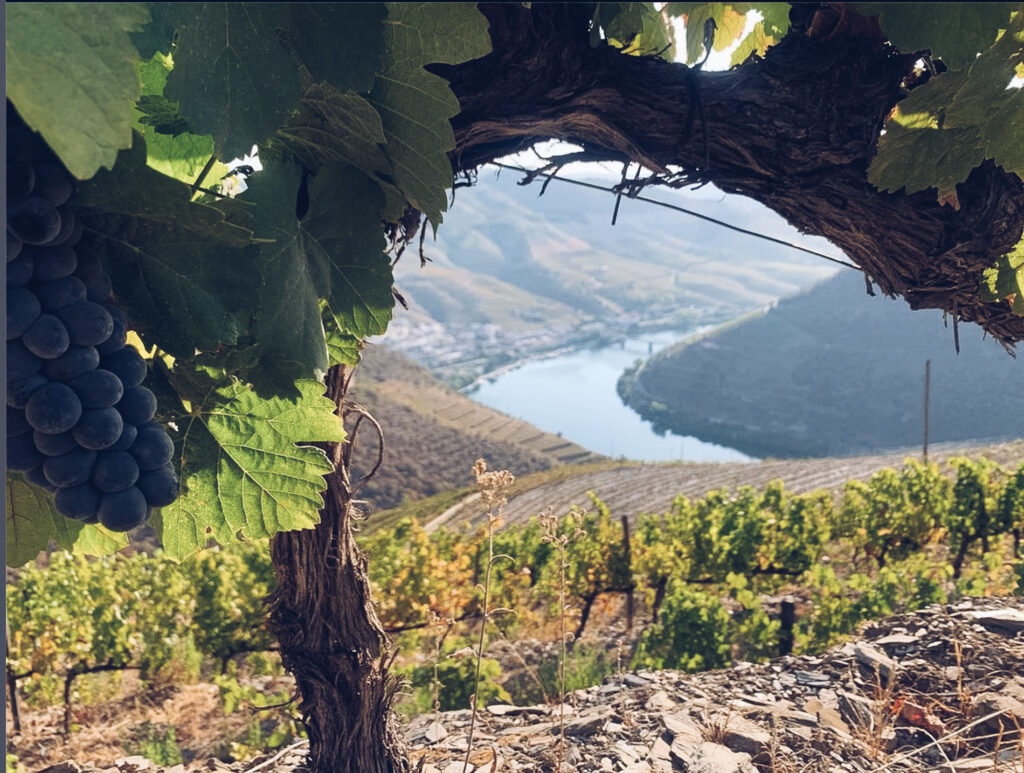
The story of the estate celebrates the pioneering spirit and a long family tradition. In 1815 Dietrich Feueheerd, originally from Hamburg, started a shipping company called Feuerheerd Bros buying and selling Port. Her daughter Claire received Quinta de la Rosa from him as a christening gift, but La Rosa’s modern history begins in 1988 when Sophia (Claire’s granddaughter) and her father Tim started to make their Port under their own label.
With a tremendous view over the valley, Quinta de la Rosa’s Restaurant serves Portuguese cuisine with locally sourced products and vegetables grown from the garden. Try the beetroot gazpacho with curd cheese and oranges, or the delicious sea bass with a caramelized cauliflower puree. Every dish is paired with Quinta de la Rosa’s wines upon the recommendation of their winemaker Jorge Moreira. Quinta de la Rosa wines are rich and full-bodied, with remarkable acidity, minerality, and freshness. They are produced with top-quality grapes from the vineyard, beautifully located right on the Douro, between mountains to the north and south.
Quinta de la Rosa also produces three different types of Port, the backbone of Portugal’s wine culture. Choose a vintage port, which has been aged nearly eight years and you’ll be surprised by the dark ruby color and the hints of blackberry and blueberry on the palate.
During harvest, which happens around September and October every year, you can participate in activities such as pruning or foot treading, aka stomping grapes. Do your best Lucille Ball impression as you move to the beat of festive folk music in a timeless ancient technique still used in the Douro.
Quinta Nova
Quinta Nova is the oldest winery in the Douro Valley and an integral part of the history of Portuguese wine. Established at the beginning of the 18th century, the historic house is now a remarkable restaurant and an 11-room boutique hotel where you’re kindly encouraged to feel at home.
The estate sits peacefully at the heart of 120 hectares of land, high above the Douro River, with a superb view of the impressive vineyards spreading beneath it. The original wine cellar (dating back to 1764) and the 19th-century manor house are harmoniously integrated into the landscape.
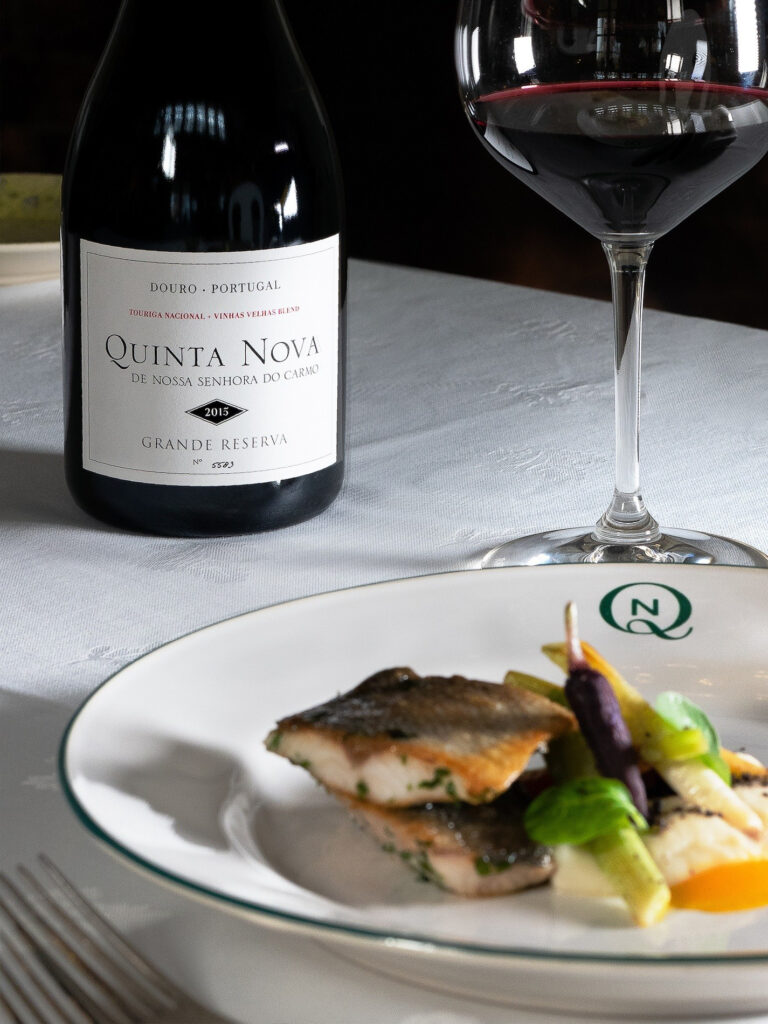
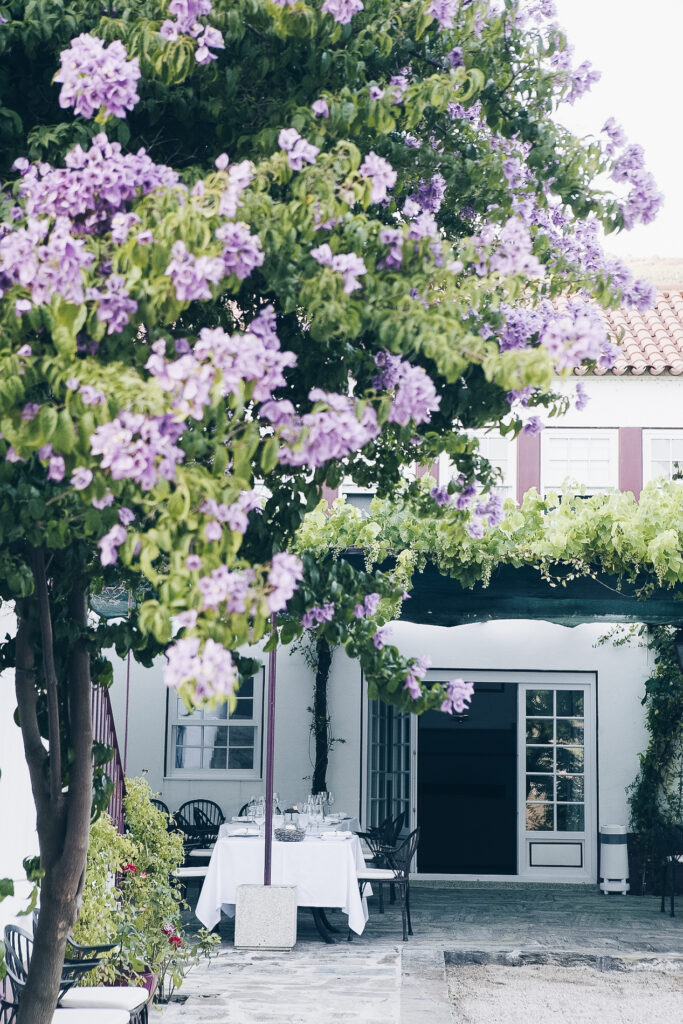
Nature and outdoor lovers will enjoy the pedestrian circuit, with three different routes to walk through the estate. It’s well worth spending some time taking long and invigorating strolls to contemplate the banks of the river and the small Chapel of Nossa Senhora do Carmo, which was built in the 17th century to protect the men who sailed along a particularly dangerous zone of the Douro River.
Originally a Port producer, Quinta Nova now boasts many varieties, including elegant red and white wines that reflect the terroir of the region. It’s also the only estate in the Douro with a small award-winning wine museum on site, with about 500 artifacts from the 19th and 20th centuries related to wine production in the Douro Valley.
Chef André Carvalho helms the kitchen at the estates Terraçu’s. The rich menu features fresh and seasonal ingredients from local farms. If you are staying for the night, the hotel’s harmonious rooms offer vintage furniture, polished floorboards, Persian rugs, and more than enough toiletries in the bathroom.
Quinta do Vallado
Quinta do Vallado’s values mirror the Esteva flower, a local resinous bush symbolic of its virtues: persistence, endurance, and resilience. With its dazzling white petals, Esteva leaves no one indifferent. This is the impact Quinta do Vallado want to instill into their wines and property. And it’s one of the reasons it’s one of the best wineries in the Douro Valley
Established in 1716, Quinta do Vallado belonged to Dona Antónia Adelaide Ferreira, a visionary who broadened wine’s appeal in unexplored parts of the Valley in the 18th century. Ferreira actively promoted the quality of Port and helped fund schools, roads, and hospitals. She became something of a folk hero as she hired many locals to work for her.
Quinta do Vallado remains to this day in the hands of her descendants. Continuing the tradition established by Dona Ferreira, the winery donates some part of its sales every year to charity associations that support people in need in the Douro.
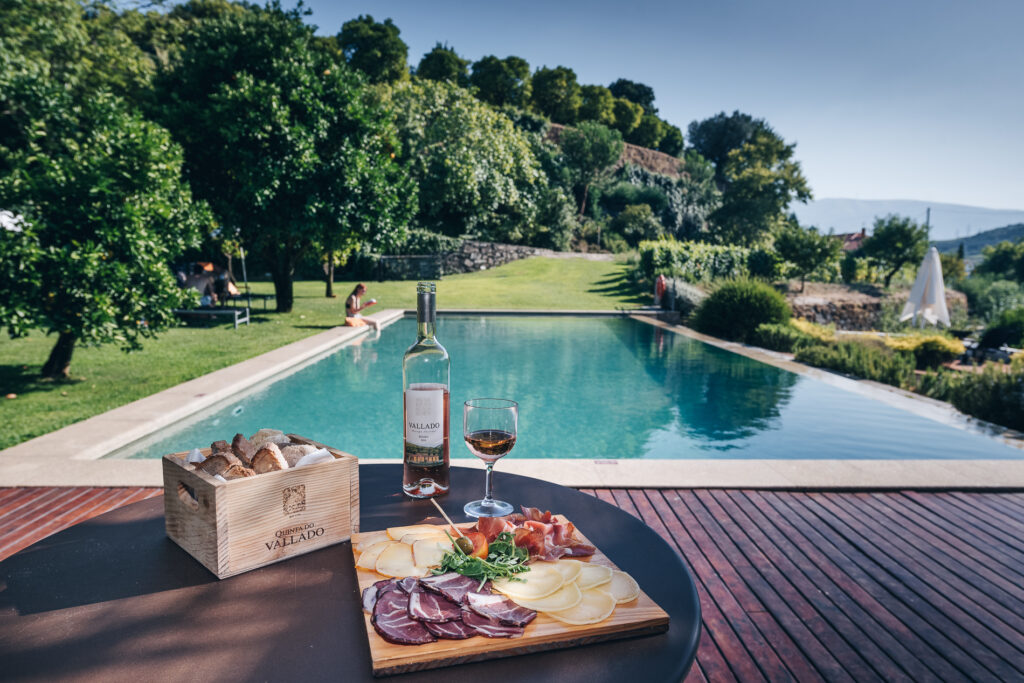
It’s not surprising that generous hospitality is built into the fabric of Quinta do Vallado. Your every need is met upon arrival, from that first glass of complimentary Port to the small tour of the estate.
The 13-room hotel (five rooms in the historic main house and eight recently built in the modern building) boasts rooms with expansive comfortable beds, spacious bathrooms, and lovely sun trap balconies. Hidden at the end of the garden there is a pool with a deck where you can easily relax and, in a separate area, among the citrus trees, you’ll find a small gym, as well as a sauna/Jacuzzi nearby. We recommend having a picnic by the river: the staff will set up a picnic basket with blankets, cushions, and even sunhats if necessary. Naturally, you’ll also get delicious food and a bottle of Quinta do Vallado Prima, a dry white wine with intense floral scents and aromas of ripe citrus.
Quinta do Crasto
Leonor and Jorge Roquette, Quinta do Crasto’s fourth-generation custodians, took over the winery in 1981 and, despite the hard work in modernization and extending the vineyards, are keen to respect the estate’s ecological heritage, which dates back centuries.
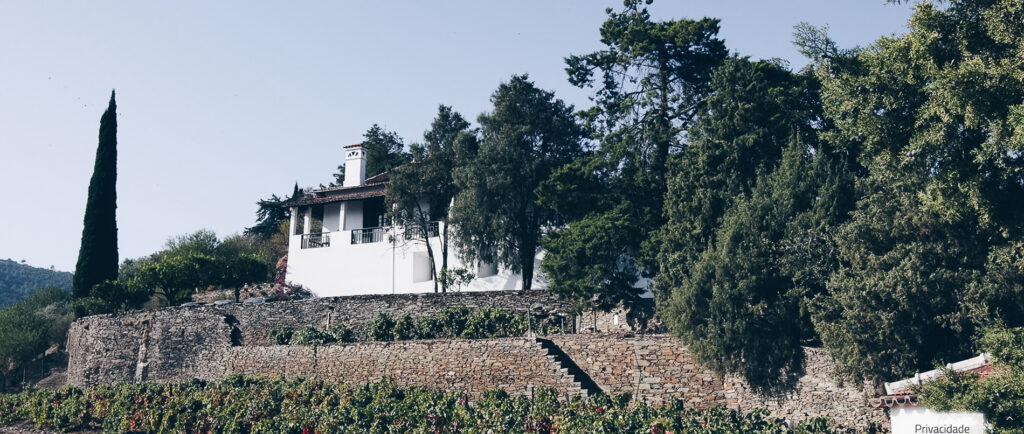
Not surprisingly, at Quinta do Crasto you can still admire one of the “Marcos Pombalinos,” the granite markers originally used as indicators when the Douro became the world’s first demarcated wine region in 1758. Nowadays all of these markers were declared Properties of National Interest. However, the real highlight of the estate is the famous infinity pool, designed at the beginning of this century by Pritzker Prize–winning architect Eduardo Souto de Moura.
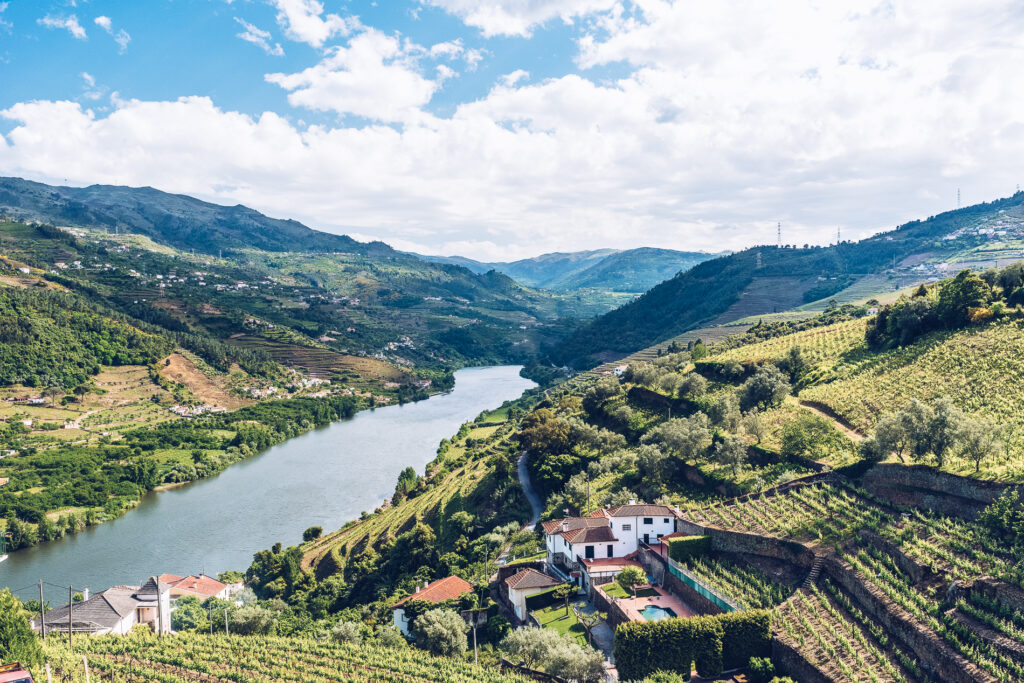
Located on one of the highest spots at Quinta do Crasto, the pool seems to hover mid-air over the Douro River, giving the illusion of being suspended magically over the Valley. The architecture creates optical illusions depending on the angle from which the pool is viewed. Apparently shaped as a rectangle, it is in fact trapezoidal. The design maximizes natural light and you will not resist taking a refreshing dip under the rich colors of the sky as the sun bids farewell. Perfect as well for the ultimate Instagram snap!
Surrounded by the imposing landscape, in the limitless serenity that imbues all who visit Quinta do Crasto, savor a Crasto Rosè, a fresh, balanced wine, with expressive aromas of raspberry and violets. Cheers!
Quinta da Pacheca
If you want to push your experience in the Douro Valley a little further, lay your head at Quinta da Pacheca Wine Hotel, where you can sleep in a giant wine barrel surrounded by the languid sounds of the valley.
In the middle of a 116-year-old vineyard, the wine barrel rooms are a bold architectural project consisting of wine pipes. Each suite is named after different Douro grape varieties and offers cozy rooms with a comfortable round bed and stunning views—through a giant round door that opens onto a small balcony—over the river and the town of Peso da Régua. They also include a private bathroom with a walk-in shower.
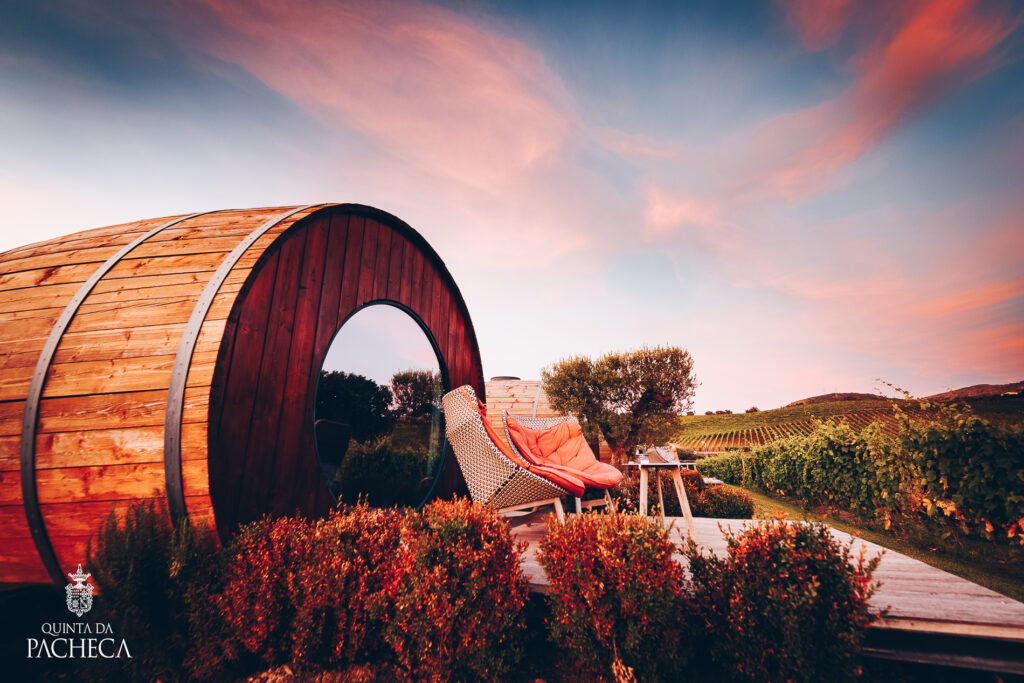
But the estate is also open to anyone who wants to visit the cellar and simply taste wine from real barrels. Quinta da Pacheca includes 15 wine-making rooms where they produce Port, reds and whites, and also many experimental wines. With Touriga Francesa, one of the most important grape varieties in the Douro region, Quinta da Pacheca launched a new project in 2020. The Grande Reserva Touriga Francesa boasts mainly black fruit with notes of chocolate. Anything with chocolate is a gratifying end to the day and certainly the best way to end your Douro Valley wine tour.
